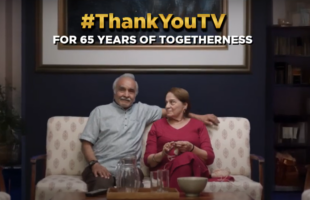“when I was asked to come to Singapore, and told I had to talk about the future of video games, I said ‘I’ll be talking to the future of video games’, and here I am, “ started Professor Jenkins, addressing Students’ Day at the recent Games Convention Asia Conference, held 18-20 September 2008 at Suntec, Singapore. And in a post-presentation interview, he apologized for overloading his audience, “Education is like trying to take a sip of water from a fire hose,” he laughed. But as one of the first humanities scholars to write seriously, academically, about aspects of popular culture and gaming, he has much to share of interest to ‘old’ or traditional ‘mass’ media and how it is colliding with new media and gaming. His topic at GCAC, ‘Games as Transmedia Entertainment.’ “You are the generation that will change the future of video games,” he told the assembled students, “Asia will be central, and it will no longer be dominated by just the US and Japan.” His rationale for this opinion, “Just as cinema reflects culture, so does gaming – we will see the emergence of games from Brazil, from Singapore, from Southeast Asia.” In an extended comparison between cinema and gaming, referring back to the days before moving pictures, Jenkins asked “Did videogamers pre-empt cinema? I am struck by the similarity between panorama boxes and the worlds created by gamers. More recently, Spirited Away has a series of levels, it looks and feels like a video game.” He says the worlds are full of extractable details that can be bought, like manga, feeding participatory culture with toys, merchandising, cos-play (where fans dress up as their favourite characters). According to Mimi Ito, a cultural anthropologist of technology use, they key is to create “a media mix in which the consumer can find his/her own place.” Using children’s cartoon, trading card, gaming, toy phenomenon Pokemon as an example, of which British educationalist David Buckingham said “Pokemon is not something you watch, it’s something you do.” With traditional media in mind, the question posed to Professor Jenkins by Television Asia Plus, referred to the many instances that such ‘reverse thinking’ – planning and developing the cross-media applications of a TV show or movie before its launch – have spectacularly failed. “Everyone’s still learning when it comes to ‘transmedia’, so it’s advisable not to roll everything out at once (until the property has some proven ratings or Box Office success). Given the fact that over 90 percent of content doesn’t work, rolling out transmedia (brand extensions) too quickly you are just increasing your risk.” That said, Jenkins says it’s imperative to at least have a transmedia strategy in mind. “Just look at the (transmedia) success of the likes of Heroes and Lost – both has a well thought through transmedia strategy and it roll-out order. Those shows’ life-spans on-line could arguably be credited with their survival through the Writers’ Strike – fans had a reassuring and engaging touchpoint to the media property even though they couldn’t watch any new episodes during that time.” Regarding convergence, Jenkins said that it’s not just about technology, “Convergence isn’t a ‘Swiss army knife’ of different technologies, convergence is about culture. Think about it in terms of culture from the ‘top down’, from the media corporations meeting culture from the ‘bottom up’ – from the users who will take it illegally, if it’s not yet available legally, or build it themselves if it does not yet exist. Whether it’s ‘cos-play’, costumes, cakes, people develop their own characters. They create fan-art, fan-sites, people take the franchise to another level eg Lara’s Sanctuary; and these fan homages can become spin-offs or the basis for new games,” said Jenkins. Quoting game creation’s ‘poster boy’ Will Wright, creator of the hugely popular SIMS franchise and now, he said that “Games will be competing (not just for fans) but for the most creative community.” Applying the same logic to any media property, not just games, it is the commitment and creativity of a property’s fan base, and the community that springs up around a media property that will be key to its longevity – and its commercial success. “Convergence is where participatory content meets corporate culture,” says Jenkins. But this democratization of media can also backfire, given that the communities games and media are seeking to woo, can also be the most organized when they feel slighted. One recent example, ironically revolves around Will Wright’s latest game Spore, published by Electronic Arts. Such is the DRM (digital rights management) surrounding Spore, considered by fans as draconian because they can’t tap into it for their own UGC (user generated content), that they have consistently given it a low user rating on Amazon. Asked about the irony that the communities corporate culture most wants to tap into, are also those most resistant to being controlled and limited by IP and DRM, Jenkins says of course there’s no easy answer to that dilemma. “Both sides are jockeying for control, and it’s not even as simplistic as considering it as the people versus the mass media corporations. The same internal struggle is occurring within media companies – with marketing departments wanting to put clips into YouTube for free, receiving writs from the company’s lawyers!” Jenkins closing advice to traditional media companies? “They need to maximize their touchpoints with the content, go where the consumer is and let them expand upon your property. Above all, to quote Douglas Adams – Don’t Panic!”
Ad – Before Content
Related Articles
Publicis India unveils heartwarming “Thank You TV” campaign for ZEE TV
Sphere Abacus sells true crime feature documentary Murder & Madness: The Cult Conspiracy to Prime Video
Spingo Continues Global Push into the Americas as O4 Media Signs Option Agreements with LA-based 5X Media and Brazilian outfit LaReina Entertainment
Keshet boards Red Alert with producer Lawrence Bende
FIFTH SEASON inks strategic partnership with Front Street Pictures for TV movies slates
Taiwan Hosts Asian Animation Summit for the First Time Bringing Together Major Buyers Netflix and Warner Bros.







